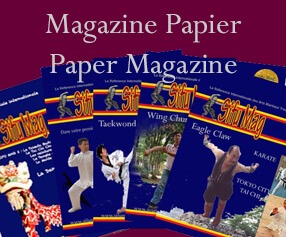The Chen School
The oldest of the schools, born in the countryside of the Wenxian district, in the province of Henan, the Chen school entered Beijing (Beijing) in 1928. Retaining certain vigorous and jumping movements of ancient boxing, it combines strength with flexibility, slowness with speed, gives preference to gyrating and enveloping movements and requires relatively significant physical effort
The Yang school
A member of the Chen school, Yang Luchan perfected the method and passed it on to his grandson Yang ChengFu who ended up giving it its final form. It is thanks to Yang luchan that we owe the popularity of Tai chi chuan. At present, the Yang school is the most popular in the world. It is characterized by the openness and elegance of its postures, the homogeneity and flexibility of its movements, often very ample and describing arcs.
The Wu School
After learning the Yang style, and on the basis of the latter, Wu Quanyou, a Manchu from Beijing (Beijing), and his son Wu Jianquan created and developed a separate style, that of Wu, whose popularity did not yield to it. than that of Yang. It is characterized by delicacy and flexibility, precision and slowness, the arcuate shape and rational breadth of movements.
Hao's school
Having trained in the Chen style in Henen, Wu Yuxiang developed the boxing of his masters, which was later introduced to Beijing (Beijing) by his disciple Hao Weizhen. This school seeks simplicity and conciseness which give its art the slender and rustic charm of the flowering plum tree. Slight movements; flexible and slow obey rigorous rules and require perfect straightness of the body.
The Sun School
After beginnings in the Xingyi and Bagua boxes, Sun Lutang began to practice boxing of the Hao school, from which he developed his own style, characterized by address and ingenuity in the movements, the frequency of changing evolutions of opening and closing, the flexibility of the footwork, the free succession of advances and retreats, which has earned it the name of “flexible Taiji boxing”.
These main schools of Taiji boxing, different in their training methods and styles, are identical in their fundamental principles and the structure of their linked series of movements. After the founding of the People's Republic of China, Taiji boxing (Tai chi), the star martial arts, quickly spread. On the traditional basis, physical education services have successively developed the following variants:
Simplified taiji boxing, intended for beginners, made a choice of “24 movements” (year 1954) among the most important and most representative of the Yang school, ranging from the simplest to the most complex, in order to facilitate the practice. and memory.
The “88” style (year 1959) was developed from that of the Yang school. While retaining the structure and arrangement of movements of traditional boxing, it unifies the training methods and highlights the characteristics of Yang boxing
Synthesized Taiji boxing, or 66 style, brings together the best of the different schools. With rich and complete content, it requires relatively significant physical effort, and is mainly used for teaching fairly advanced practitioners.
The style “48” or “40” or “42” (year 1989) for the middle level is mainly based on that of the Yang school, while referring to others. He is particularly well received by fans for his dynamism, balance and grace. It marks a break with traditional conventions and crosses the boundaries between school
In 1989 the first Taiji competition took place.
But modern systems no longer have the same research or a gap exists in the traditional style, where the founder Yang Luchan was nicknamed "the invincible" for the way of meeting and winning challenges without hurting his opponent, and the physical form current.
There are also variants, old styles (old form of Yang, Guanpingyang, Chen, etc.) and other systems which bear the name of Taiji (Tai Chi) but which have no origin with the Chen style, such as Ying Taiji…etc
Sifu Mag
September 18, 2023
Sifu magazine

Our blogs
Sign in to leave a comment